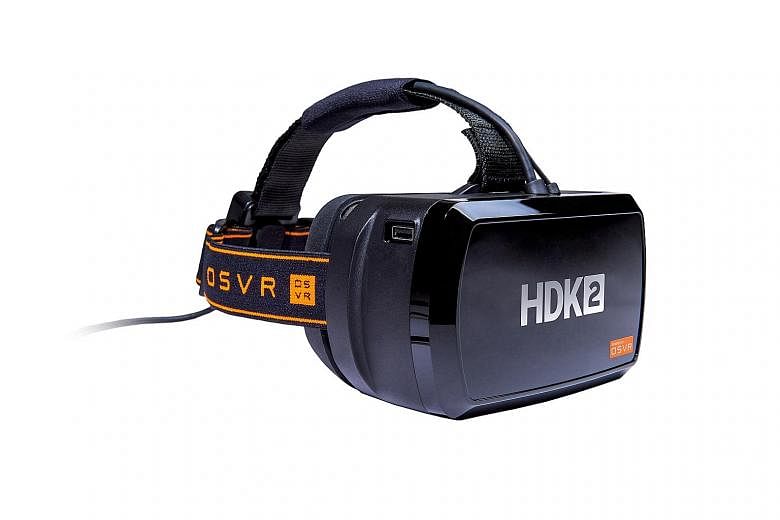Unless you are a virtual reality (VR) enthusiast or game developer, you are probably unaware of the OSVR HDK2 headset.
Built by gaming hardware maker Razer, the HDK2 has flown under the radar compared with the Oculus Rift and HTC Vive headsets.
This is despite the fact that, unlike the other headsets, the HDK2 has been available in Singapore since early this month.
At $609, the HDK2 is also cheaper than other PC-based headsets, such as the US$599 (S$835) Oculus Rift. However, the PlayStation VR costs less at $599.
But there is a catch: the HDK2 is not exactly plug-and-play ready. While Razer provides a beta Windows installer, I understand from the company that the software setup process may be too complex for the non-techie.
In fact, I have read accounts in online forums of HDK2 users relying on guides and YouTube videos to get their headsets to work properly.
The HDK2 is powered by OSVR, an open-source VR software platform that supports a slew of headsets, in contrast to Oculus' proprietary platform.
More importantly, the HDK2 supports SteamVR, which gives it a decent starting library of games and apps.
Bundled with the HDK2 are two games, a futuristic 3D racing game called Radial G: Racing Revolved and a first-person shooter, Descent Underground.
Radial G involved a lot of spins, twists and turns at high speeds but, surprisingly, I never once felt nauseated by the experience.
In fact, the HDK2's dual Oled displays, which offer a resolution of 1,080 x 1,200 pixels for each eye and a 90Hz refresh rate, seem as good as those of other VR headsets.
Razer says that its lenses are SLR-grade and have a special coating to reduce the screen-door effect (the appearance of fine black lines between the pixels).
This coating appears to work, as I barely noticed the pixels while using the headset.
I also like the HDK2's belt box module. This small dongle has multiple ports that connect to both the PC and the headset to help with cable management. You can clip it to your pants or pockets so you can move around easily while wearing the headset.
The biggest downside for me is that my glasses cannot fit in the headset. The HDK2 is too snug and narrow for my spectacles.
To accommodate those who wear spectacles, the HDK2 has adjustable optics lenses for short-sighted users. Unfortunately, my myopia is so severe that these lenses - useful up to 400 degrees, according to Razer - are insufficient to grant me perfect clarity.
The HDK2 does not come with built-in headphones, so you will need to plug in your own.
Like the other VR headsets in the market, the HDK2 needs a VR-ready PC. The minimum specifications include an Intel Core i5 processor, 8GB of RAM and a GeForce GTX 970 or AMD Radeon R9 290 graphics card.
For tinkerers and developers looking to get into the nascent VR arena, the HDK2 provides a competent and relatively cheapoption .


